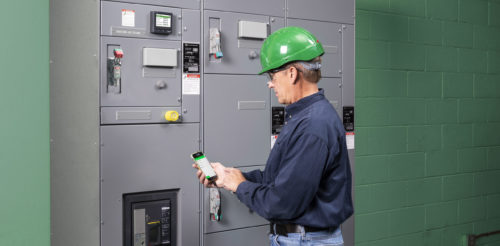Your questions answered: Arc flash mitigation
Reducing arc flash to electrical personnel is an evolutionary process. Learn more in this Q&A
During the Sept. 17, 2020, webcast on “Arc flash mitigation,” several questions were left unanswered. The subject matter experts providing additional information are:
- Zia Salami, PhD, Management Specialist – SME: Electrical Power System, CDM Smith, Charlotte, N.C.
- Tracy Wagoner, Senior Electrical Systems Manager, Associate, Henderson Building Solutions, Lenexa, Kansas.
Question: Is a direct current arc flash calculation required for uninterruptible power supply systems to determine the greatest fault current between the alternating current and DC connections? Are UPSs required to be labelled?
Zia Salami: In general, it is important to have label for all equipment including UPS. If it is a large UPS, and if possible, perform study with both sources, AC and DC, and apply the worst-case label on the UPS.
Question: Can zone-selective interlock be put into existing equipment?
Tracy Wagoner: Depending on the existing switchgear, it is technically possible to retro-fill the gear with a new, engineered ZSI system. Because new internals are installed in existing gear in place, there can be significant additional cost, but savings in downtime may offset. Finances involved will vary by each situation.
Zia Salami: Yes. Of course, it is not part of IEEE 1584-2018 standard; however, this standard is provided some guidance’s, refer to IEEE 1584-2018, Section 4.11.
Question: How do you use light detection relay for isolation of source of current?
Zia Salami: I suggest referring to the manufacturer manual and website for detail.
Question: Can you explain a little more how zone-selective interlock reduces overcurrent protective device trip times while maintaining proper coordination?
Zia Salami: Within ZSI scheme, we can have INST setting of incoming CB enabled since the restrain (control) signal from the load CB prevent (block) it from tripping on INST, if there is a fault on the load side. This scheme can be implemented with more than one CB or based on a defined zone and would require communication between each CB/trip units. It is important to consider the communication and CB operating time when establishing time delay (or fault clearing time) between these devices.
Question: Clarification is needed on the arc-resistant switchgear topic. You mentioned it reduces the amount of energy, but does not reduce electrical energy in the circuit. Could you please clarify that?
Zia Salami: Clarification, I meant, arc-resistant switchgear reduces the amount of energy exposed to the person that is nearby and typically should be provided by manufacturer. However, arc-resistant switchgear does not reduce the electrical energy stored in the switchgear/circuit.
Question: We had an arc fault in a 480-volt switchboard. The main had a ground fault relay, but did not trip. The breaker tested fine, and the client is wondering why the main breaker did not trip.
Tracy Wagoner: Some arc faults have a high impedance path and the current flow is not high enough to trip the circuit breaker on overcurrent. Conversely, it is also possible for an event to have a higher current that the overcurrent protection device is capable of clearing if the OCPD selected is less that the available energy.
Question: Is selective coordination required per NEC for 480-volt, 1,000-amp service?
Tracy Wagoner: It is required for overcurrent protection devices for the life safety, critical and essential electrical branches for health care occupancies.
Question: How does an engineer handle single-phase systems as it relates to arc flash?
Zia Salami: Refer to IEEE 1584-2018, Section 4.11 related to single phase system. It states “… the arcing current can then be used to find the protective device opening time and incident energy by using the three-phase equations provided in this guide. The incident energy result is expected to be conservative …”
Also, I recommend using electrical software that provides modeling and analysis for single phase system including arc-flash study.
Question: Does the team have any experience with arc quenching technology? Can you please provide some background on how it works and its effectiveness?
Tracy Wagoner: We do not, but we are working on investigating those systems
Question: Is it possible to have a ZSI system for circuit breakers located in more than one enclosure and provided by different manufacturers?
Tracy Wagoner: While technically it would be possible, if the communications could be worked out. It will require engineering from the manufactures of each different gear type and they would have to stand by the system once built.
Question: Can a bus or transformer differential relay lower the arc flash energy?
Zia Salami: In general differential relay can be used to lower arc flash energy if the bus or transformer are within the zone of protection. Also, total fault clearing time should be specified, this is typically the total of differential relay and CB operating times.
Question: What is the proper way to inspect contacts on an energized automatic transfer switch? Can I inspect normal contacts while on emergency power and inspect at emergency contacts while on normal power?
Tracy Wagoner: With proper lockout and safeties and PPE, it is possible on some types of transfer switches. Insurance and liability considerations have to be taken into account for each facility in question and cannot be answered without specific details.
Question: Do disconnect switches and transformers require arc flash label? If yes, what is the minimum disconnect ampere rating and transformer kilovolt ampere requiring labels?
Tracy Wagoner: Standards state that any electrical equipment operating at 50 volts or more and is likely to require examination, adjustment, servicing or maintenance while energized will require an arc flash label so yes, they do. Kilovolt-ampere rating of the transformer is not specified and exemptions for less than 125 kVa have been removed from newer codes.
Question: Would you consider relay coordination to be the most important factor in mitigating arc flash, or another component?
Zia Salami: In my opinion, changing protective device setting (or type if possible), as long as it maintains system coordination (i.e., for system reliability) would be my top choices for mitigation strategies.
Question: In the study case for the arc flash calculations, how many levels of contributions should we consider?
Zia Salami: I would not go more than two, or maximum three, levels.
Do you have experience and expertise with the topics mentioned in this content? You should consider contributing to our CFE Media editorial team and getting the recognition you and your company deserve. Click here to start this process.





